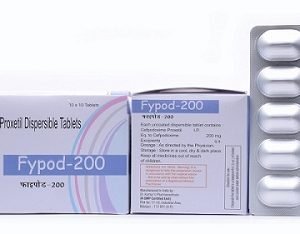Description
PHARMACOLOGY
ACECLOFENAC
PHARMACODYNAMICS:
MECHANISM OF ACTION:
It inhibits cyclo-oxygenase (COX) activity and to suppress the PGE2 production by inflammatory cells, by inhibiting IL-Beta & TNF in the inflammatory cells (Intracellular Action).
It blocks degeneration and stimulates synthesis of extra cellular matrix of cartilages by inhibiting the action of different cytokines.
Drug and its metabolites inhibit IL-6 production by human chondrocytes. This leads to inhibition of increase of inflammatory cells in synovial tissue, inhibition of IL-1 amplification, inhibition of increased MMP synthesis and thus ensuring proteoglycan production.
It inhibits IL-1 and TNF production by human chondrocytes, inflammatory cells and synovial cells and therefore blocks suppression of GAG and collagen synthesis and stimulates growth factors mediated synthesis of GAG and collagen.
4`-hydroxyaceclofenac a metabolite of aceclofenac inhibits pro MMP1 and pro MMP3 produced by synovial cells (Rheumatoid Synovial Cells) in serum and in synovial fluid and thus inhibits progressive joint destruction by MMPs.
Aceclofenac inhibits Neutrophils Adhesion & Accumulation at the inflammatory site in the early phase and thus blocks the pro-inflammatory actions of Neutrophils.
Aceclofenac is also an NSAID with greater COX-2 specificity
PHARMACOKINETICS:
- Absorption- It is rapidly and completely absorbed after oral administration
- Distribution- Widely distributed in the body as protein-bound form. It is highly protein-bound (>99.7%). Aceclofenac penetrates into the synovial fluid, where the concentrations reach approximately 60% of those in plasma.
- Metabolism- Metabolized into metabolites in the liver. Main metabolite is 4-hydroxyaceclofenac
- Excretion- It is excreted through urine mainly as conjugated hydroxymetabolites.
PARACETAMOL
PHARMACODYNAMICS
MECHANISM OF ACTION:
Paracetamol has analgesic and antipyretic action.
It is more active on cyclo-oxygenase enzyme in brain. Peripherally it is a poor inhibitor of prostaglandin synthesis.
Analgesic action: Paracetamol raises the pain threshold and produces analgesic effect.
Antipyretic action: Paracetamol lowers fever by direct action on the thermoregulatory centre in the Hypothalamus and block the effects of endogenous pyrogen.
PHARMACOKINETICS:
- Absorption: Paracetamol is rapidly and completely absorbed after oral administration.
- Distribution: It is distributed mostly in the body in unbound form.
- Metabolism: It is extensively metabolized in the liver.
- Excretion: Excreted in the urine.
SERRATIOPEPTIDASE
PHARMACODYNAMICS
Mechanism of Action: – This anti-inflammatory proteolytic enzyme binds to the alpha-2-macroglobulin in the blood, which helps to mask its antigenicity. Then it is slowly transferred to the site of inflammation. Serratiopeptidase hydrolyze bradykinin, histamine, serotoxin responsible for oedema.It reduces swelling improves microcirculation and expectoration of sputum. Due to this action Serratiopeptidase has anti-inflammatory, antioedemic and fibrinolytic activity and act rapidly on localized inflammation.
PHARMACOKINETICS:
Absorption: – It is absorbed orally. In the case of enteric coated tablet absorption take place in the intestine. After absorption it is directly enter in to the bloodstream. It is excreted via urine and bile.
INDICATIONS:
- Aceclofenac: – It is used for the relief of pain and inflammation in rheumatoid arthritis, osteoarthritis and ankylosing spondylitis.
- Paracetamol: – This drug is used to treat mild to moderate pain (from headaches, menstrual periods, toothaches, backaches, osteoarthritis, or cold/flu aches and pains) and to reduce fever.
- Serratiopeptidase: – It is proteolytic enzyme that has potent anti-inflammatory property.













